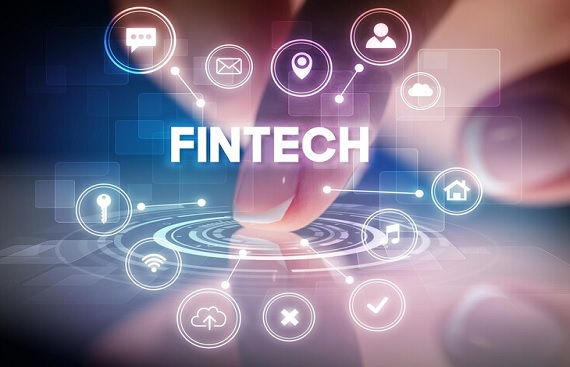How is FinTech Transforming Lending in India's Digital Economy?

Over the past few years, India has seen a significant uptick in the adoption of digital payment methods, driven by two major factors. Firstly, in 2016, the government's decision to replace old currency notes with new ones aimed at curbing illicit financial activities and tax evasion catalyzed a shift towards digital transactions. Secondly, the onset of the COVID-19 pandemic in 2020 amplified this trend, as concerns surrounding virus transmission through physical currency propelled a surge in demand for contactless payment solutions. Among these, the Unified Payments Interface (UPI) has emerged as a standout, renowned for its user-friendly interface and seamless integration across various technological platforms, appealing to both consumers and businesses alike.
Debashis Banerjee, Head - of Marketing & Alliances, Happy, says, "FinTech has enabled millions of under-served people across the country to have access to financial services. Especially with the advancements in digitalization, finTech has gained significant traction in India. Moreover, as a result of various empowering initiatives taken by the government and significant controllers, finTech has had a huge impact on the global financial services sector and is developing at a break neck pace".
The rise of digital payments has not only transformed the payment landscape but has also revolutionized borrowing and lending practices within the financial sector. Leveraging technological advancements, FinTech firms have disrupted traditional lending models, offering innovative solutions tailored to the diverse needs of individuals and businesses, including those traditionally underserved by conventional banking institutions. This transformative shift towards digital finance, with alternative lending at its forefront, is democratizing access to credit and fostering greater financial inclusion, empowering individuals to conveniently access credit facilities. It emphasizes a broader paradigm shift towards a more inclusive and technologically-driven financial ecosystem, where FinTech innovations play a pivotal role in enhancing accessibility, efficiency, and transparency across various financial services.
Alternative lending
As online payments soar, merchants are expanding their acceptance infrastructure to cater to this demand by embracing various digital payment systems such as credit and debit cards, mobile wallets, mobile banking, and Unified Payments Interface (UPI). This surge in the payments industry, fueled by growing Internet and mobile usage, evolving consumer attitudes, and supportive regulations, forms the groundwork for alternative lending in India.
With consumers increasingly making purchases, even at local stores, through digital channels, alternative lending firms can now tailor small-ticket loans to suit the specific needs of these merchants, rather than offering generic options. This tailored approach helps mitigate risks associated with unsecured lending. By leveraging non-traditional data sources and advanced analytics to assess creditworthiness, alternative lending emerges as a vital capital source for small merchants who may struggle to secure bank loans under conventional terms. Also, the widespread adoption of digital payments across all segments generates a wealth of digital data points, which non-traditional lenders utilize to evaluate credit risk, thus expanding the opportunities for alternative lending in the market.
Digital lending
Digital lending platforms have revolutionized the borrowing experience by seamlessly integrating technology with traditional banking services. This has resulted in faster loan approvals, minimal paperwork, and broader access to credit, especially during the COVID-19 pandemic. For instance, non-bank apps offer instant loans within minutes, sans collateral. However, the Reserve Bank of India (RBI) is scrutinizing these platforms due to concerns like mis-selling, data privacy breaches, hidden costs, unethical practices, and illegitimate operations, aiming to safeguard unsuspecting customers. The RBI established a Working Group in January 2021, which identified three main concerns: conduct, technology, and charges. Based on these issues, the Working Group released its recommendations in November 2021. The RBI implemented these recommendations in August 2022 and subsequently released the Digital Lending Guidelines on September 2, 2022. These Guidelines are issued under various acts, including the Banking Regulation Act, 1949, and the Reserve Bank of India Act, 1934. Following this, the RBI published Frequently Asked Questions regarding the Guidelines on February 15, 2023.
BNPL: The buy now, pay later (BNPL) method has gained significant traction worldwide, garnering widespread acceptance across diverse markets. This payment option grants consumers the freedom to make purchases without immediate payment, instead opting for fixed installments spread over time. BNPL services, extensively utilized by businesses, notably in e-commerce, contribute to enhanced conversion rates, increased average order values, and broader customer outreach. From a merchant perspective, BNPL offers the advantage of upfront payment for goods, with the provider managing financing tasks such as underwriting, installment plans, and debt collection.
P2P: Peer-to-peer (P2P) lending, conducted via online platforms, enables direct lending between individuals or businesses without traditional financial intermediaries. Predominantly offering unsecured personal loans, borrowers apply online, undergo risk assessment, and select from investor-provided options. This streamlined process benefits both borrowers and lenders: investors often enjoy higher returns and borrowers find it a more accessible funding source, especially if conventional loans are unattainable due to low credit ratings or unique loan purposes. Moreover, P2P loans typically offer lower interest rates due to heightened lender competition and reduced origination fees. Despite its advantages, P2P lending carries risks, including credit risk and lack of government protection for lenders in case of default. Nevertheless, P2P lending remains a viable alternative financing option for many individuals and businesses.
Wrapping Up
As FinTech continues to grow, alternative lending has a bright future ahead, offering easier access to finance, smoother processes, and clearer terms. It's important to mix innovation with responsible practices to make sure everyone can benefit from these changes. By being clear, fair, and protective of consumers, India can make the most of FinTech lending, boosting its economy and improving people's lives.

